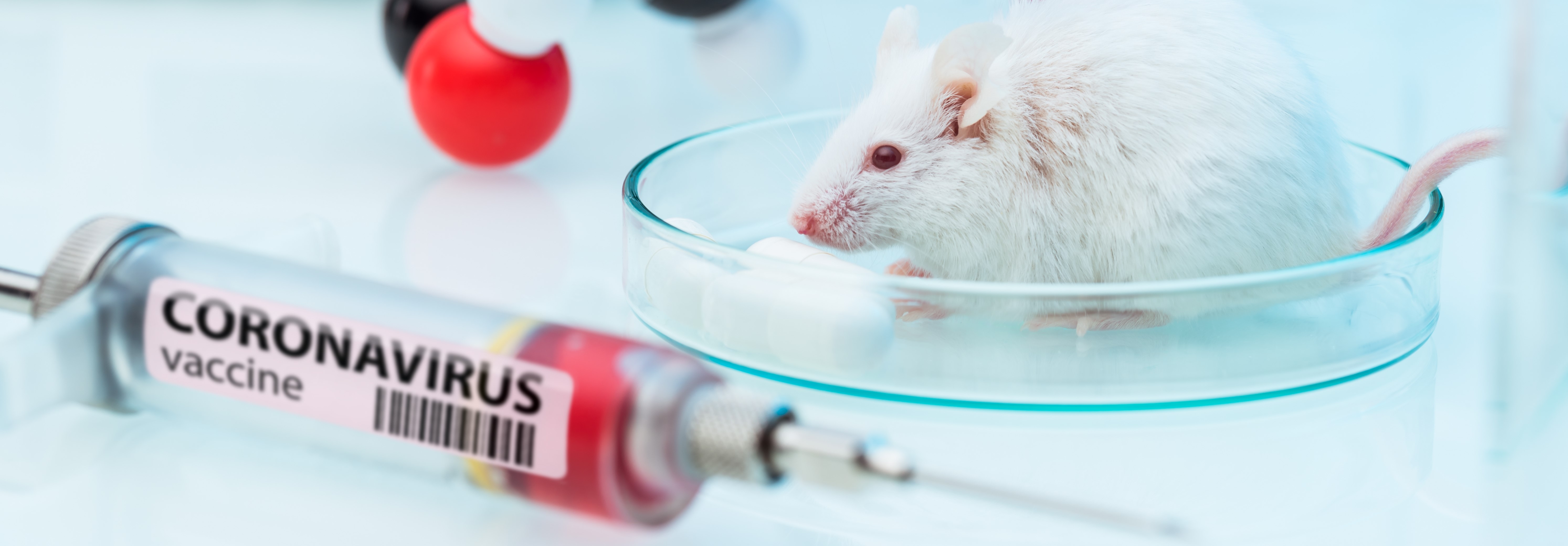by Buck Institute
February 25, 2021 . BLOG
Developing a Platform for COVID-19 Therapies Using a Novel Mouse Model
By Sivan Brodo-Abo and Alyssa Gonzalez, Dominican University Graduate Students; edited by Dr. Pankaj Kapahi, Buck Professor
Amidst this COVID-19 crisis that we are currently living in, it is important to find drug interventions to treat infected patients. Even as the vaccination effort ramps up, more than 1,000 Americans are still dying every day from COVID-19.
Interestingly enough, mice, the most common animal model used in scientific research, are naturally resistant to SARS-CoV-2, the virus that causes COVID-19. For this reason, scientists from a study from last summer wanted to understand why mice are resistant, determine a way in which they could infect them with this virus, and then test a variety of therapies on them. Mice are incredibly important tools for research. It is critical to take this research to our advantage in order to confront this crisis.
Once the scientists successfully infected mice with COVID-19, their goal was to see if the mice could recover using convalescent plasma from previous COVID-19 patients, and Remdesivir, an antiviral medication treatment. At the time, neither of the treatments had FDA approval.
The scientists were successful in sensitizing these mice to SARS-CoV-2 (their first goal) by introducing human DNA, specifically human ACE2 (hACE2). Because they were successful in infecting these mice, they determined that there was something unique about this hACE2 protein that allows the SARS-CoV-2 virus to enter and reproduce in the new host cells. When exposed to new diseases, our immune system creates B cells, which produce antibodies specifically designed to fight particular diseases, as well as T cells, and store them in case that same disease invades again. After infecting the mice in this study with SARS-CoV-2, the researchers wanted to test various aspects of the immune system that are effective at removing the SARS-CoV-2 virus from the infected mice lungs. They found that cluster of differentiation (CD) cells, CD4+ and CD8+ T cells, are the most effective immune cells for fighting off SARS-CoV-2 in infected patients.
These scientists also wanted to compare how effective current therapies are, specifically IV plasma from recovering or recovered COVID-19 patients and Remdesivir, at the time the only common antiviral medication available for COVID-19. They first compared the effectiveness of receiving convalescent plasma from healthy human donors and patients who recovered from COVID-19, SARS, or MERS. They treated infected mice with convalescent plasma from these four samples and found that COVID-19 plasma was the most effective for curing patients with COVID-19. This was important because it showed the affinity of the COVID-19 antibodies for neutralizing the virus, even in a mouse. Although COVID-19 plasma was effective, Remdesivir was faster and more effective. By developing an effective mouse model, researchers will be able to test new therapeutics at a faster rate.
Mice are the most commonly used animal in research experiments because they are biologically similar to humans. In addition, mice can be inbred to produce identical strains, allowing for a greater number of mice to be tested. This is important because it can ultimately indicate that treatments successful in mice also have a high chance of being successful in humans Although Remdesivir is effective, better treatments have yet to be discovered and tested. Repeating experiments designed for COVID-19 therapeutics will allow scientists to optimize treatments and confirm their efficacy in mice. Because hamsters can naturally contract COVID-19, scientists can later use them to test these experiments as a new model for severe cases of COVID-19. If successful, labs can move forward by testing the experiments on non-human primates. By having multiple successful results in different animal models, this can lead to clinical trials for treatment options for FDA approval.

SHARE